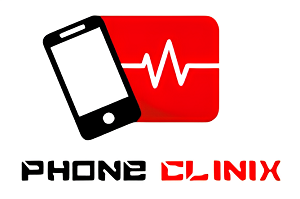In the fast-paced digital world, we rely heavily on our smartphones for everything, from communication to entertainment and even work. However, as we navigate our daily lives through cityscapes, there are times when we experience frustrating issues with our devices. These problems often involve connectivity, auto-rotation, and overall phone performance. One of the most critical aspects of maintaining a seamless mobile experience is diagnosing and addressing issues that arise, particularly when urban environments throw a wrench into the works.
Urban areas are filled with signals, networks, and electromagnetic interference that can sometimes cause connectivity issues and other performance problems on smartphones. Fortunately, with the right tools, particularly phone diagnostic software, users can identify the root causes of these problems and find solutions.
Phone Diagnostic Software: Your First Line of Defense
Phone diagnostic software is a powerful tool that allows users to identify and resolve common mobile device issues. Whether you’re dealing with a slow connection, connectivity drop-offs, or issues related to auto-rotation, phone diagnostic software helps you troubleshoot these problems quickly and efficiently. By running diagnostic tests on various aspects of your device, such as its battery, CPU, and network connectivity, the software can identify potential issues, allowing you to either fix them yourself or determine if professional help is needed.
Why Phone Diagnostic Software is Essential
Smartphones are complex devices with multiple functions and features that work together to provide users with a seamless experience. However, any number of issues can arise, especially when you’re in a busy urban environment. Phone diagnostic software helps in the following ways:
- Identifying Connectivity Problems: One of the most frustrating issues faced by smartphone users in cities is connectivity problems. High-density urban areas with numerous Wi-Fi networks, cell towers, and other devices can cause interference that impacts phone performance. Diagnostic software can detect poor signal strength, connection drops, and faulty networks, providing insight into the issue.
- Checking Hardware Functionality: Sometimes, the issue might be physical damage to the hardware, such as a broken GPS sensor or malfunctioning auto-rotation sensor. Diagnostic software runs tests on various hardware components to help identify these issues early.
- Managing System Resources: Phones with low storage or excessive background applications can become sluggish and unresponsive. Diagnostic software can help you analyze resource consumption and suggest optimizations for better performance.
- Auto-Rotation Issues: Auto-rotation problems are another common issue that urban dwellers face when using smartphones. Whether you’re reading a message, watching a video, or browsing the web, a malfunctioning auto-rotation feature can be incredibly annoying. A diagnostic tool can check whether the sensors responsible for rotation are functioning properly.
Auto-Rotation Problems: When the Screen Won’t Rotate
Auto-rotation issues are particularly frustrating when you’re using your phone in an urban setting. Whether you’re navigating through a map while commuting, or trying to watch a video, your phone’s inability to rotate the screen can make these tasks unnecessarily difficult.
Causes of Auto-Rotation Issues
Auto-rotation problems can stem from several causes, particularly in cities where electromagnetic interference is more common. Some possible causes include:
- Software Bugs: Sometimes, the issue with auto-rotation can be due to a glitch in the operating system or a specific app. Whether it’s a system update that went wrong or a buggy third-party app, software issues can interfere with the functioning of the auto-rotation feature.
- Sensor Problems: Smartphones rely on sensors such as the accelerometer and gyroscope to detect the orientation of the phone. If these sensors are malfunctioning or damaged, the phone won’t be able to detect whether it’s in portrait or landscape mode.
- Settings Conflicts: It’s easy to overlook the fact that auto-rotation may be disabled in the settings, or there might be an issue with screen orientation preferences. Sometimes, you may have accidentally turned off auto-rotation without realizing it.
- EMI (Electromagnetic Interference): In urban areas with dense populations, electromagnetic interference from nearby buildings, wireless networks, and other devices can disrupt your phone’s sensors and cause issues with features like auto-rotation.
How Phone Diagnostic Software Helps with Auto-Rotation Problems
Phone diagnostic software can assist in diagnosing auto-rotation problems by providing the following:
- Sensor Testing: The software can check if the gyroscope and accelerometer sensors are functioning properly. If these sensors are working as expected, the issue may lie with the software or settings rather than the hardware.
- System Optimization: Diagnostic tools also help in optimizing system performance, which could indirectly solve auto-rotation problems caused by slow processing speeds or other performance issues.
- Advanced Troubleshooting: In some cases, the software can offer advanced troubleshooting steps for users. This may involve recommending app updates, factory resets, or even repairing faulty hardware if necessary.
Urban Signal Blues: Connectivity Issues in the City
In addition to auto-rotation problems, another common issue faced by smartphone users in urban areas is poor connectivity. The presence of numerous wireless signals, such as Wi-Fi networks, cellular towers, Bluetooth devices, and more, can lead to network congestion and interference, resulting in poor data speeds, dropped calls, and Wi-Fi disconnects. This is particularly problematic in cities with dense populations and high-tech infrastructure.
Understanding Urban Connectivity Issues
Urban environments pose unique challenges for smartphones, especially when it comes to connectivity. Here’s why:
- Signal Congestion: In cities, there are usually a high number of Wi-Fi networks, cellular towers, and Bluetooth signals. While this provides extensive coverage, it also creates congestion. When multiple devices connect to the same network or nearby towers, signal quality can degrade, leading to slower speeds and dropped connections.
- Interference: Electromagnetic interference (EMI) from buildings, electric systems, and other electronic devices can disrupt mobile signals. This interference can significantly affect connectivity, causing issues like poor call quality, slow internet speeds, and difficulty maintaining connections.
- Network Tower Overload: Urban areas often have many users connecting to the same mobile network towers. When these towers become overloaded with too many connections, users may experience slower data speeds, poor signal strength, and call drops.
Phone Diagnostic Software for Connectivity Troubleshooting
Phone diagnostic software is invaluable when trying to diagnose connectivity issues in cities. The software can check various factors, including:
- Signal Strength: It can test the strength of Wi-Fi and cellular signals to determine if the network is too weak to support a stable connection. The tool can also recommend switching to a different network or provider if necessary.
- Network Interference Detection: Diagnostic tools can scan for sources of interference in your environment. By pinpointing these factors, you can take steps to mitigate the impact, such as switching Wi-Fi channels or moving closer to a router or signal tower.
- Connection Testing: The software can simulate internet browsing and network performance tests to determine if your phone is experiencing problems connecting to specific servers or websites. This can help in isolating whether the problem is with your device or the network.
- Data Speed Tests: Diagnostic software also includes data speed tests to gauge the speed of your mobile internet connection, helping you understand whether you’re experiencing slower-than-usual data rates due to congestion or network limitations.
Resolving the Urban Connectivity Blues
Once the underlying issue has been diagnosed using phone diagnostic software, it’s time to fix the problem. Depending on the findings, there are several steps that can be taken to resolve connectivity issues and auto-rotation problems.
- Fixing Auto-Rotation Issues: If the diagnostic tool identifies a hardware sensor problem, professional repair may be necessary. However, if it’s a software issue, updating your phone’s software or performing a factory reset may solve the problem.
- Resolving Connectivity Issues: If connectivity problems are due to signal congestion, you may need to switch to a different Wi-Fi network or move closer to a router or cellular tower. For mobile network issues, consider contacting your service provider or changing your mobile plan if necessary.
- General Optimization: Phone diagnostic software can help you optimize system settings, clear cache files, and remove unnecessary apps to improve overall performance and reduce strain on the device’s resources.
Conclusion
Urban environments offer both opportunities and challenges for smartphone users. Connectivity and auto-rotation issues are common frustrations in these busy settings, but with the right tools such as phone diagnostic software you can easily diagnose and address these problems. Whether it’s signal strength, sensor malfunctions, or system inefficiencies, phone diagnostic tools offer quick and effective solutions that help users get back to enjoying their devices without interruption.



